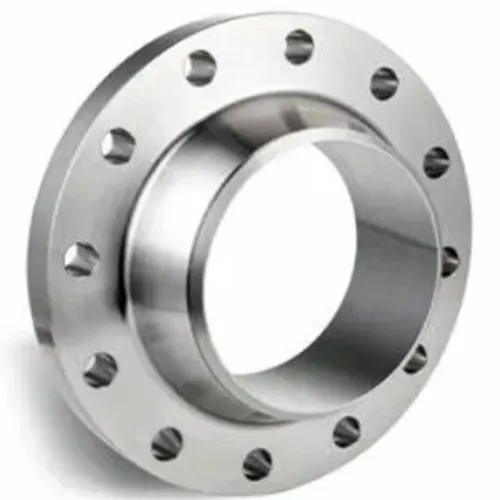-
Cangzhou Yulong Steel Co., Ltd.
-
Phone:
+86 13303177267 -
Email:
admin@ylsteelfittings.com
- English
- Arabic
- Italian
- Spanish
- Portuguese
- German
- kazakh
- Persian
- Greek
- French
- Russian
- Polish
- Thai
- Indonesian
- Vietnamese
- Zulu
- Korean
- Uzbek
- Hindi
- Serbian
- Malay
- Ukrainian
- Gujarati
- Haitian Creole
- hausa
- hawaiian
- Hebrew
- Miao
- Hungarian
- Icelandic
- igbo
- irish
- Japanese
- Javanese
- Kannada
- Khmer
- Rwandese
- Afrikaans
- Albanian
- Amharic
- Armenian
- Azerbaijani
- Basque
- Belarusian
- Bengali
- Bosnian
- Bulgarian
- Catalan
- Cebuano
- China
- China (Taiwan)
- Corsican
- Croatian
- Czech
- Danish
- Esperanto
- Estonian
- Finnish
- Frisian
- Galician
- Georgian
- Kurdish
- Kyrgyz
- Lao
- Latin
- Latvian
- Lithuanian
- Luxembourgish
- Macedonian
- Malgashi
- Malayalam
- Maltese
- Maori
- Marathi
- Mongolian
- Myanmar
- Nepali
- Norwegian
- Norwegian
- Occitan
- Pashto
- Dutch
- Punjabi
- Romanian
- Samoan
- Scottish Gaelic
- Sesotho
- Shona
- Sindhi
- Sinhala
- Slovak
- Slovenian
- Somali
- Sundanese
- Swahili
- Swedish
- Tagalog
- Tajik
- Tamil
- Tatar
- Telugu
- Turkish
- Turkmen
- Urdu
- Uighur
- Welsh
- Bantu
- Yiddish
- Yoruba

Dec . 04, 2024 17:59 Back to list
butt weld bends
Understanding Butt Weld Bends An Essential Component in Pipe Fitting
In the world of mechanical engineering and pipe fitting, the integrity and reliability of welded joints are crucial for ensuring the seamless flow of fluids and gases. One of the essential elements in the design and application of piping systems is the butt weld bend. These components not only facilitate directional changes in piping systems but also conserve the overall strength and pressure ratings of the system. In this article, we will explore what butt weld bends are, their advantages, applications, and the factors to consider when using them.
What Are Butt Weld Bends?
Butt weld bends are pipe fittings designed to change the direction of a pipeline. They are typically manufactured from the same material as the pipes they connect, ensuring compatibility and a uniform expansion rate. The fabrication process involves welding two pieces of pipe at their ends, creating a smooth transition at the bend. This method eliminates the need for additional fittings, providing a streamlined approach to piping systems.
Butt weld bends are characterized by their specific angles, commonly found in 45-degree or 90-degree configurations, permitting variations in layout designs based on project requirements. The seamless nature of butt welding results in minimal turbulence during fluid transportation, making it an efficient choice for fluid mechanics.
Advantages of Butt Weld Bends
1. Strength and Durability One of the foremost benefits of butt weld bends is their enhanced mechanical strength. Since they are welded at the joints, the stresses experienced during operation are uniformly distributed across the bend, reducing the likelihood of failures due to stress concentrations.
2. Reduced Pressure Drop Unlike other types of fittings, such as elbows or tees, butt weld bends provide a smoother internal surface. This leads to less turbulence and a lower pressure drop when fluids flow through the system. In applications where maintaining pressure and flow rate is crucial, this advantage can significantly enhance system efficiency.
3. Easier Maintenance The absence of additional fittings or joints in a butt welded bend means fewer potential leak points. This characteristic simplifies maintenance procedures and enhances the overall reliability of the system.
4. Versatility in Application Butt weld bends are used in a wide range of industries, including oil and gas, chemical processing, power generation, and plumbing. Their ability to handle high pressures and temperatures makes them suitable for various demanding applications.
Applications of Butt Weld Bends
butt weld bends

Butt weld bends find applications in several sectors. In the oil and gas industry, they are used to connect pipelines over rough terrain or when navigating around obstacles. In chemical processing plants, they facilitate the movement of corrosive substances without compromising the integrity of the system.
Moreover, in fire protection systems, butt weld bends are essential for ensuring that water supply lines can navigate structural elements without adding weakness to the pipeline. In HVAC systems, these bends help in directing air flow while maintaining pressure and efficiency.
Key Considerations When Using Butt Weld Bends
When incorporating butt weld bends into your piping systems, several factors should be considered
1. Material Compatibility Ensure that the materials used for the pipes and the bends are compatible to prevent corrosion and galvanic reactions.
2. Welding Technique The quality of the weld is critical to the performance of the bend. Employing skilled welders and established welding procedures can ensure the reliability of the joint.
3. Angle and Radius The design of the bend, including the angle and radius, should meet the specifications of the particular system. Too sharp of a bend can cause excessive turbulence and pressure loss.
4. Standards and Regulations Always adhere to local codes and industry standards for installation and materials. Compliance with such regulations can significantly enhance the safety and reliability of the piping system.
Conclusion
Butt weld bends are an integral part of modern piping systems, providing a robust solution for directional changes in fluid transport. Their strength, durability, and efficient design make them a preferred choice in critical applications across various industries. By understanding their advantages and following best practices for installation and maintenance, engineers can ensure reliable performance in their piping systems for years to come.
Latest news
-
ANSI 150P SS304 SO FLANGE
NewsFeb.14,2025
-
ASTM A333GR6 STEEL PIPE
NewsJan.20,2025
-
ANSI B16.5 WELDING NECK FLANGE
NewsJan.15,2026
-
ANSI B16.5 SLIP-ON FLANGE
NewsApr.19,2024
-
DIN86044 PLATE FLANGE
NewsApr.19,2024
-
DIN2527 BLIND FLANGE
NewsApr.12,2024
-
JIS B2311 Butt-Welding Fittings LR/SR 45°/90° /180°Seamless/Weld
NewsApr.23,2024
-
DIN2605-2617 Butt-Welding Fittings LR/SR 45°/90°/180° Seamless/Weld
NewsApr.23,2024











